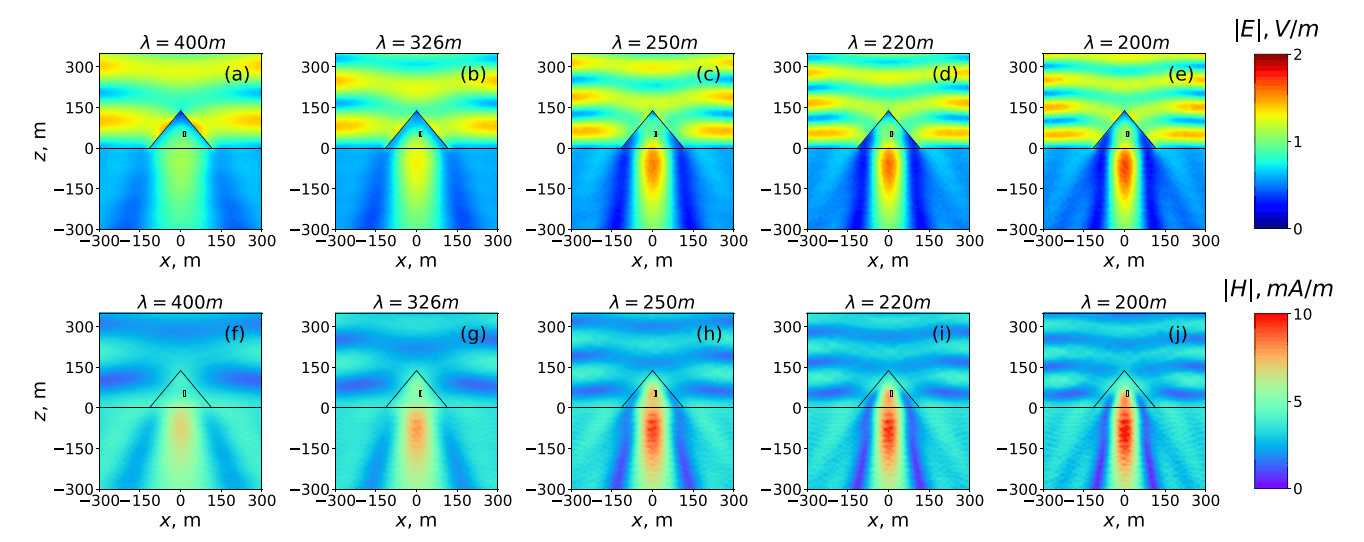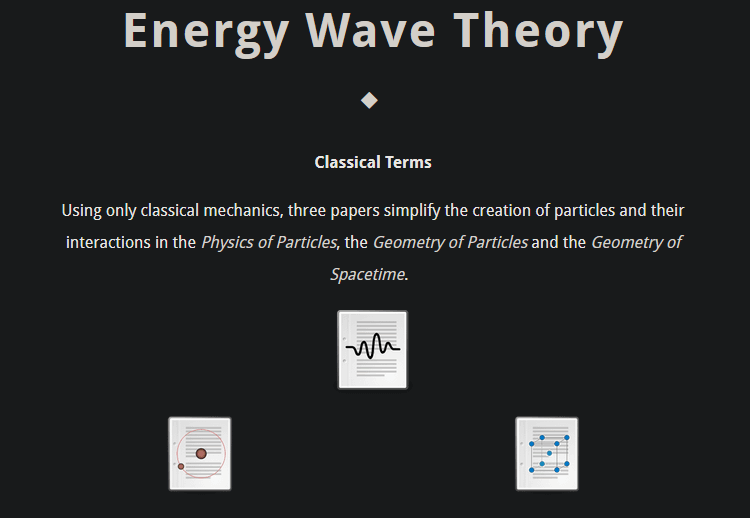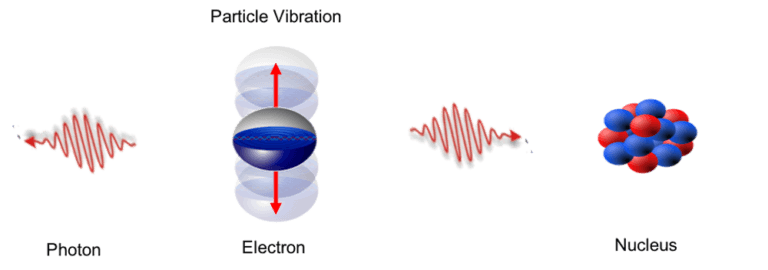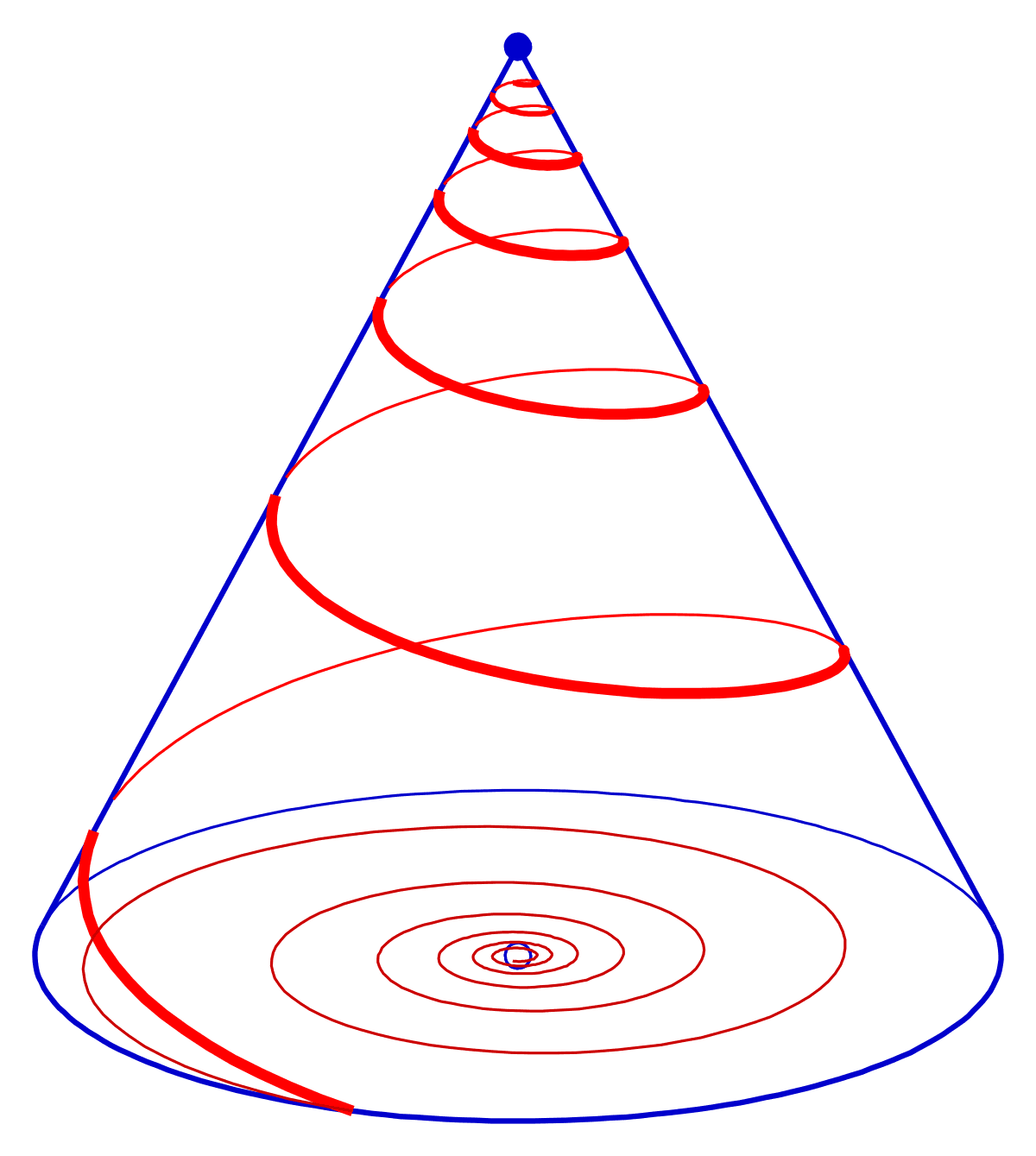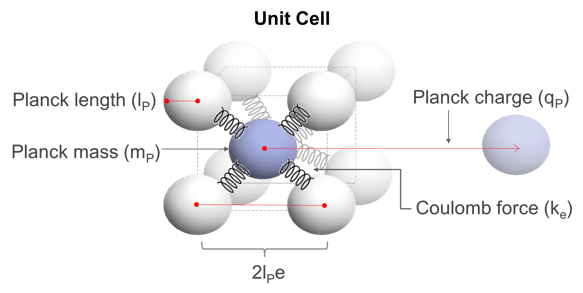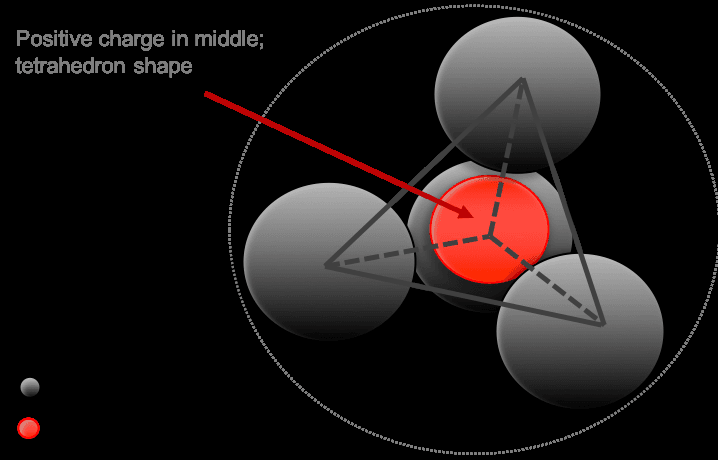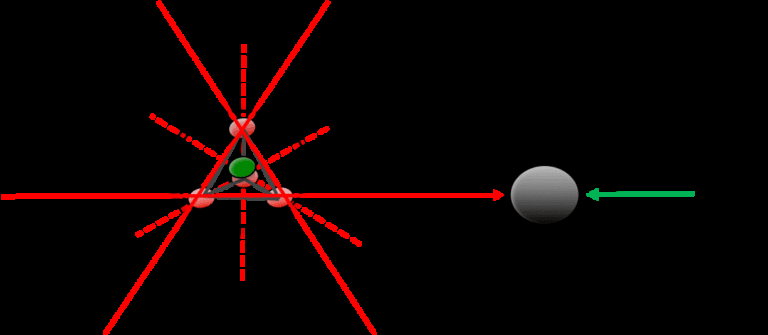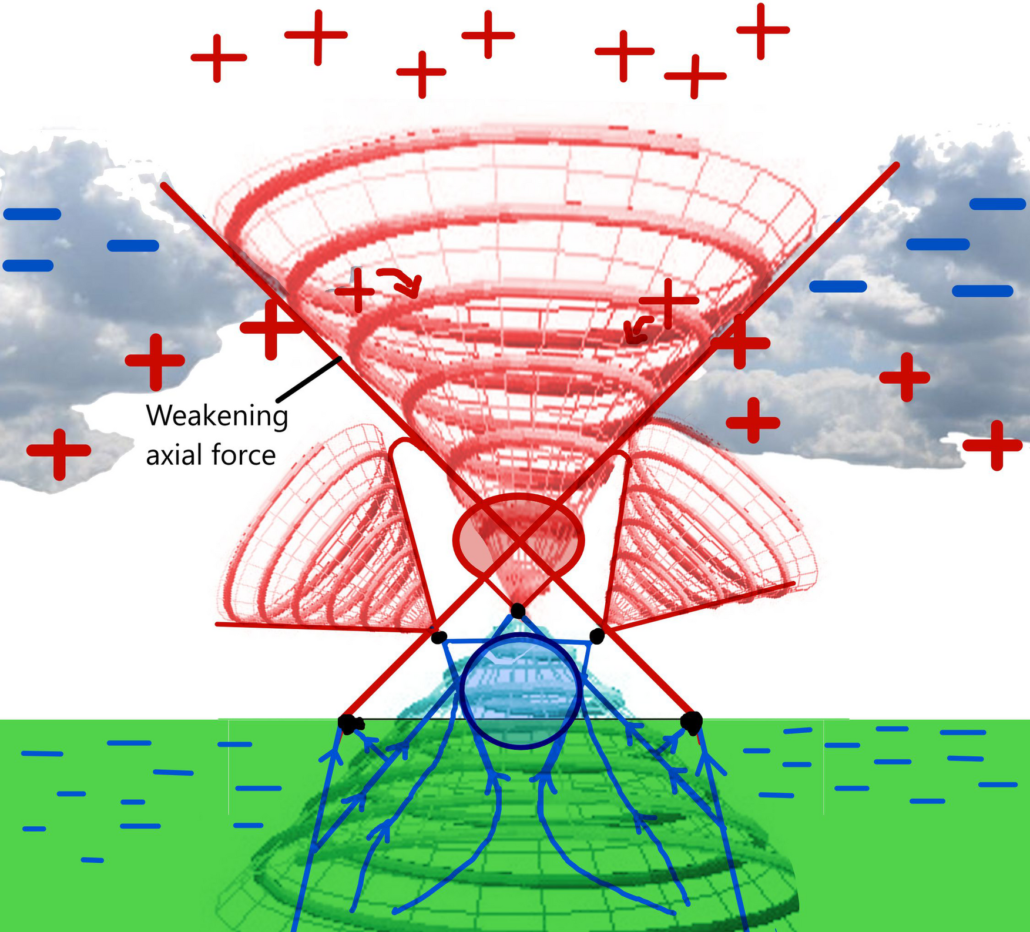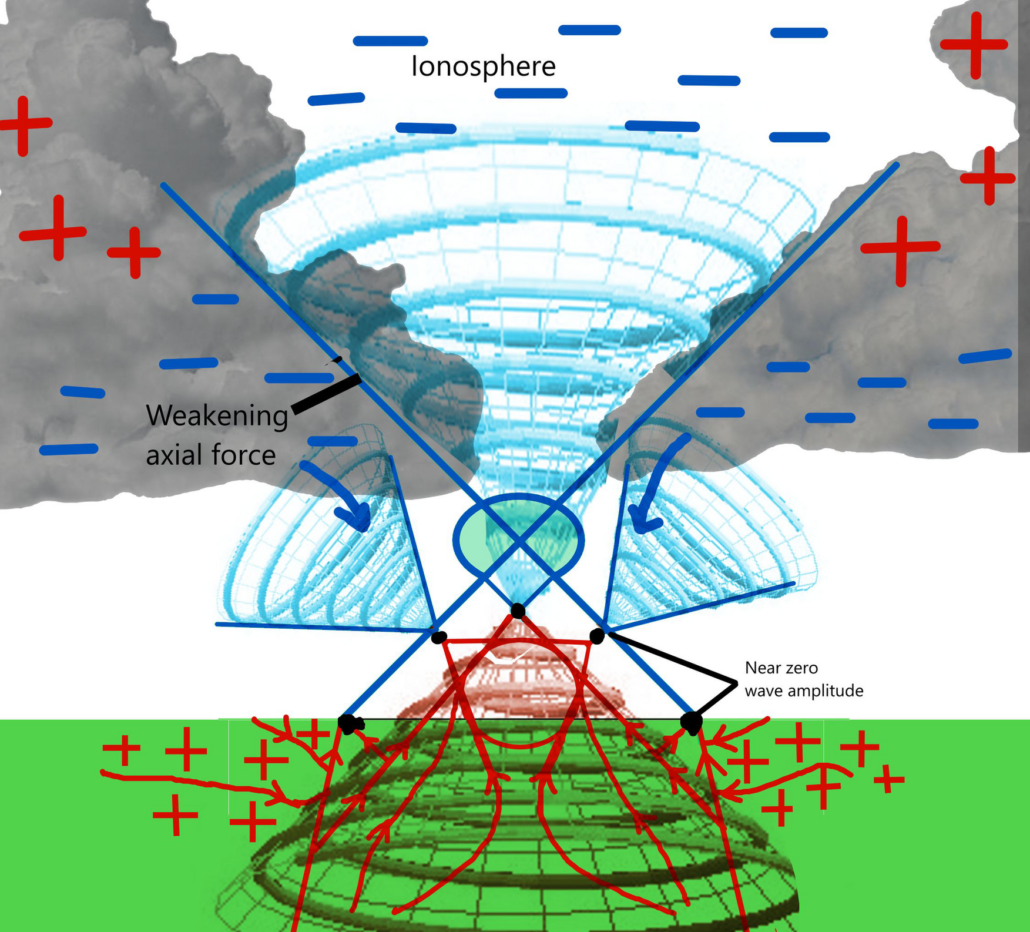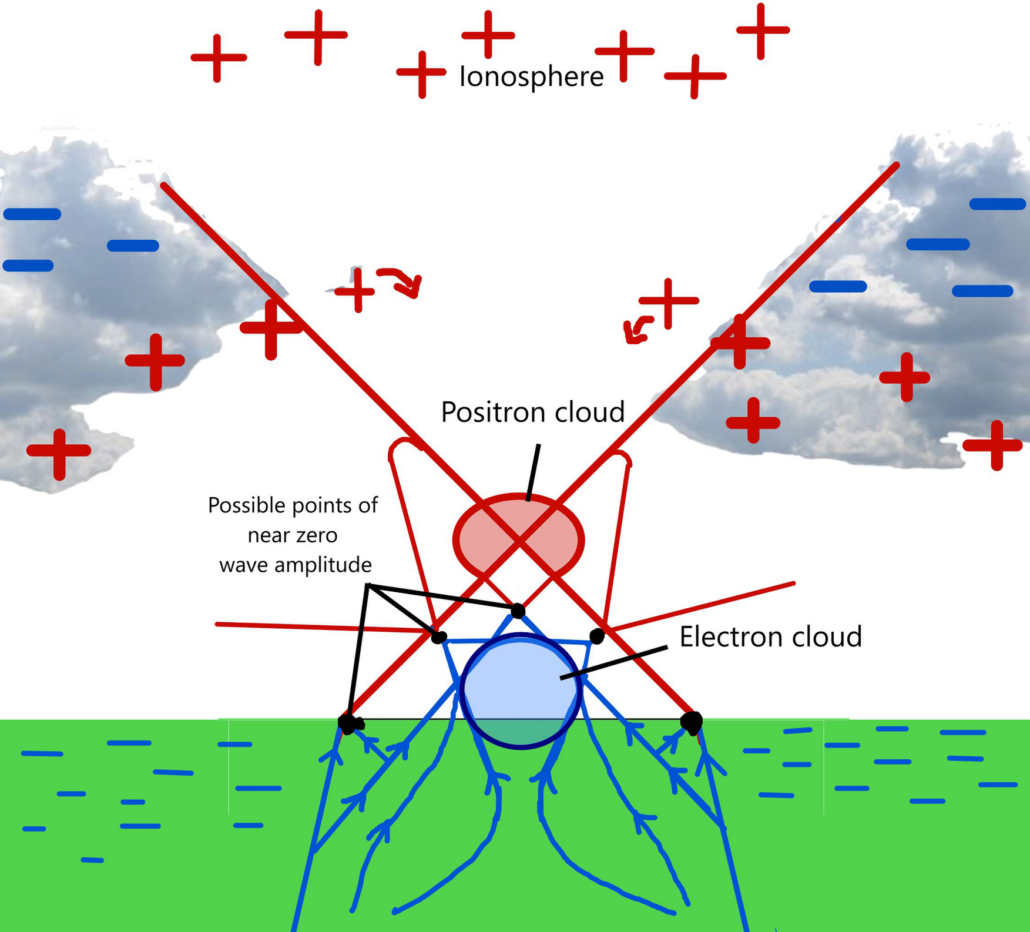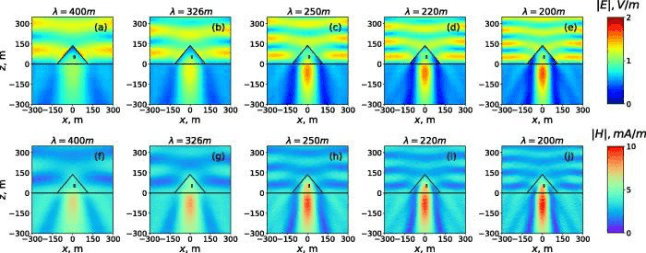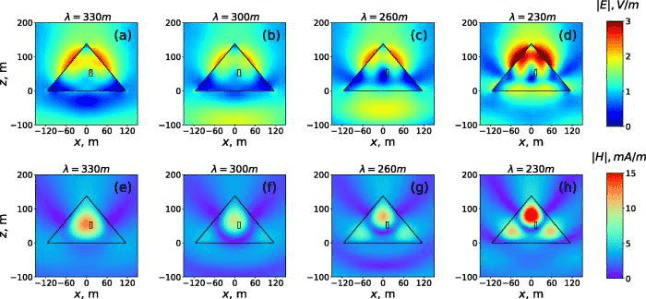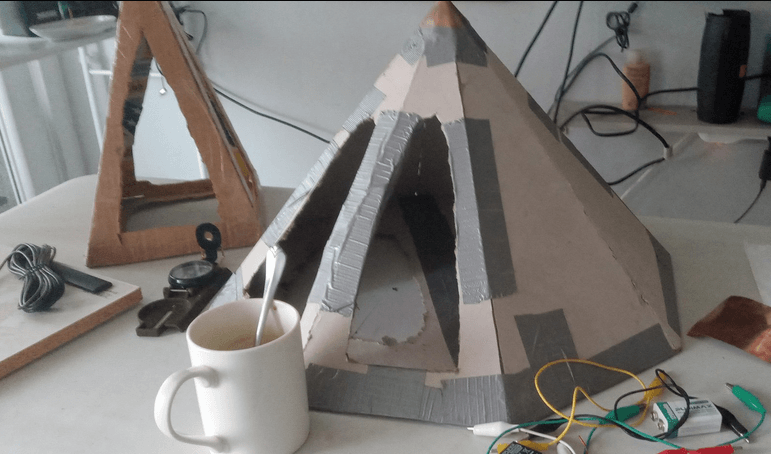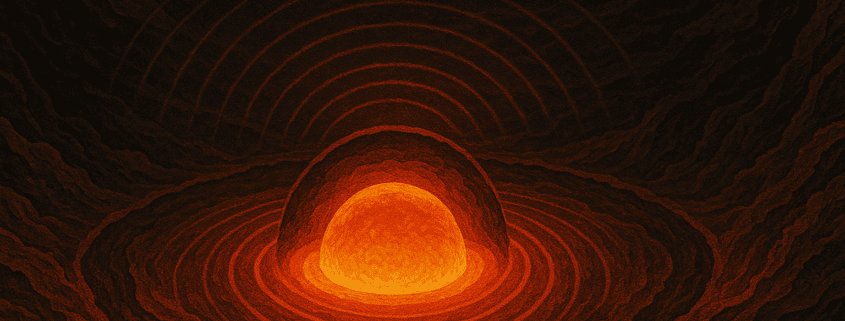Abstract
The hypothesis that the Great Pyramid of Giza may function as an electromagnetic transducer or antenna is supported by the study conducted by Mikhail Balezin et al., published in the Journal of Applied Physics in 2018. This research demonstrates that the Pyramid resonates with radio frequency waves, specifically within the 200–600 meter wavelength range, activating its dipole and quadrupole moments. As a result, the Pyramid acts as a natural antenna capable of concentrating electromagnetic energy, potentially influencing the Earth’s ionosphere or other environmental electromagnetic fields. The geometric configuration of the Pyramid may not only focus this energy but also amplify ion collection, potentially playing a role in regulating weather patterns through ion vortex formation, ionospheric charge redistribution, and resonant interactions with atmospheric frequencies.
Furthermore, the Pyramid’s electromagnetic properties could significantly impact life by influencing the concentration of negative ions, altering Earth’s natural resonances, and attracting photons. These effects suggest the Pyramid’s geometry may catalyze or modify chemical reactions by manipulating electron distributions, molecular orientations, and reaction intermediates. The concentration of ions and electromagnetic energy could influence reaction kinetics, stabilize specific compounds, and even contribute to the formation of materials such as ammonia through ionization or solubility adjustments.
This paper utilizes Energy Wave Theory (EWT) to propose that the Pyramid’s geometric design mimics the geometry of particles, creating a mechanism through which electromagnetic fields interact with the surrounding environment. These interactions suggest that pyramidal structures possess an emergent property, offering potential applications far beyond architecture. The Pyramid may function as a chemical reactor, enhancing or regulating chemical processes through its ability to manipulate electromagnetic energy. These conclusions are further substantiated by the existence of a patent for a pyramid-shaped antenna, which relies on the same geometric principles to facilitate resonance and energy collection, reinforcing the idea that the Pyramid’s shape is integral to its electromagnetic properties.
These findings challenge conventional quantum mechanics and relativity, which would require substantial theoretical extensions to explain such phenomena. The empirical evidence, thus, favors a wave-based interaction model grounded in the Pyramid’s geometry and EWT, opening avenues for further research on its capabilities and implications in various domains, including atmospheric science and chemistry. Future studies will delve deeper into these possibilities to understand the full extent of the Pyramid’s influence on its surroundings.
Introduction
The Great Pyramid of Giza and its potential to manipulate energy has historically, been relegated to the realm of speculative mystery. Multiple “conspiracy theories”, sometimes illogical, sometimes eerily consistent but still, relegated to near oblivion, have been developed around it. Yet, in 2025, a dawn of an era when human understanding now rapidly begins to evolve in rebellion, one must ask: Why has the serious exploration of the Pyramid’s potential to interact with electromagnetic fields been so remarkably overlooked? While much attention has been given to its historical, cultural, and symbolic significance, the Pyramid’s physical properties, particularly in terms of its electromagnetic behavior, remain startlingly under explored under a concise framework, with fragmented accounts of its “hidden” phenomena being relegated to bits and pieces found in the internet, or books that end up derelict in old pawn shops.
The existing scientific paradigms—primarily quantum mechanics and relativity—are no strangers to explaining electromagnetic phenomena. However, when it comes to the Pyramid, these theories fall short. The suggestion that the Great Pyramid could function as an electromagnetic transducer or antenna is not some wild conspiracy theory or pseudoscience. Rather, it draws upon empirical findings, which demonstrate that the Pyramid has the ability to resonate with specific frequencies in a specific pattern, and exhibits properties akin to an antenna. Yet, despite these discoveries, the mainstream scientific community has largely ignored or dismissed the potential implications of these results.
In this paper, I propose that the Pyramid’s geometric shape, potentially serving as a sophisticated electromagnetic device, could have significant applications in altering or influencing atmospheric conditions, weather patterns, and even chemical processes. The conventional frameworks of quantum mechanics and relativity, while useful in their own domains, fall flat when tasked with explaining the full extent of these phenomena. In this paper, Energy Wave Theory (EWT) is used to offer a more fitting, explanation for the Pyramid’s ability to concentrate electromagnetic energy and interact with environmental forces.
So, while others may continue to cling to outdated models, this paper seeks to chart a new course—one that acknowledges the empirical evidence, challenges established paradigms, and reexamines the possible functions of the Great Pyramid as a complex and purposeful structure with capabilities far beyond simple architectural wonder and conspiracy theories.
The Great Pyramid of Giza exhibits electromagnetic properties, aligning with theories of interaction with Earth’s ionosphere
The study found that the Pyramid’s chambers can collect and concentrate electromagnetic energy, which aligns with the idea that the structure might have been at minimum, coincidentally shaped to interact with Earth’s ionosphere or other environmental electromagnetic fields. This concentration of energy, particularly when the Pyramid is considered on a substrate, suggests it could influence or monitor electromagnetic conditions, creating the utility of this geometric shape in electromagnetic phenomena far beyond mere architecture.
The ability to scatter and focus electromagnetic waves into the substrate hints at an interaction with Earth’s electric field, potentially affecting atmospheric or ionospheric conditions, and provides a bridge between theoretical models and empirical evidence, suggesting the Pyramid’s geometry was crucial not only for its monumental presence but possibly for practical or even scientific purposes.
Abstract
“Resonant response of the Great Pyramid interacting with external electromagnetic waves of the radio frequency range (the wavelength range is 200–600 m) is theoretically investigated. With the help of numerical simulations and multipole decomposition, it is found that spectra of the extinction and scattering cross sections include resonant features associated with excitation of the Pyramid’s electromagnetic dipole and quadrupole moments. Electromagnetic field distributions inside the Pyramid at the resonant conditions are demonstrated and discussed for two cases, when the Pyramid is located in a homogeneous space or on a substrate. It is revealed that the Pyramid’s chambers can collect and concentrate electromagnetic energy for the both surrounding conditions. In the case of the Pyramid on the substrate, at the shorter wavelengths, the electromagnetic energy accumulates in the chambers providing local spectral maxima for electric and magnetic fields. It is shown that basically the Pyramid scatters the electromagnetic waves and focuses them into the substrate region. The spectral dependence of the focusing effect is discussed.“
Propagation of electromagnetic waves inside the pyramids of Cheops at different lengths of radio waves (from 200 to 400 meters). The black rectangular position of the so-called King’s Chamber. Credit: ITMO University, Laser Zentrum Hannover
It is interesting to note that there are no papers I have found that disprove this phenomenon observed in the pyramid of Giza. The most common arguments used for disproving the phenomena by modern academia, are largely, gross fallacies:
“Lack of Empirical data” – Critics claim there’s a lack of empirical data, implying that because we haven’t found enough evidence, the theory must be false. However, absence of evidence does not equate to evidence of absence. The difficulty in gathering empirical data on ancient structures does not invalidate the hypothesis but rather points to the need for innovative research methods or technologies to explore these possibilities. The critique overlooks the complexities of studying ancient structures where direct experimentation is limited. New technologies like muon tomography for imaging the internal structure of pyramids, or advanced electromagnetic simulations, could provide the empirical evidence needed. Moreover, the presence of any electromagnetic anomalies should be seen as potential support rather than dismissed due to current data limitations.
Furthermore, I propose there has been an unwarranted lack of representation, propagation and serious consideration for patents, research, books, accounts and papers that have seen the same phenomena with similar geometric structures in the last, at minimum, 60 years. This enormous body of evidence will be explored in future articles, and I invite collaboration in this subject.
Denial of the Antecedent – The argument that observed electromagnetic effects might be due to environmental factors rather than the pyramid’s properties could be seen as denying the possibility that the pyramid’s design itself could resonate with these environmental factors. The skepticism here might stem from a narrow interpretation of what constitutes “inherent” properties. If the pyramids were designed with an understanding of environmental interactions (like Earth’s natural frequencies), then the observed resonance effects could indeed be part of their intended function. Experimental setups or simulations under controlled conditions have shown to differentiate between environmental and structural contributions to resonance, which supports the argument that this is inherent to the geometry of the structure.
Chronological Snobbery – This critique assumes that ancient societies could not have possessed knowledge or abilities that modern science has only recently begun to explore or understand. This is a form of historical myopia, ignoring the possibility of lost or unrecognized ancient technologies. The argument here might undervalue the intellectual achievements of ancient civilizations. Historical records, myths, and the sheer scale and precision of pyramid construction suggest an advanced understanding of their environment. Even if electromagnetic properties weren’t explicitly understood as we know them today, they might have been empirically observed and utilized.
False Dilemma – Suggesting that the observable phenomena should only be explained through conventional physics without considering the pyramid’s unique geometry or location implies a false binary choice between conventional science and these theories. This critique is an example of “Either-Or Fallacy,” where alternative explanations are presented as if they must exclude each other. In reality, the pyramid’s electromagnetic interactions could be a synergy of known physics and unexplained physics applied in unique ways due to its geometry, materials, or environmental context.
However, I must warn here…
Conventional Einstein-based physics and quantum mechanics have inherent gaps that make them inadequate for fully explaining the phenomena observed in the pyramids, particularly when these phenomena could be better understood through alternative models of particle interaction and energy resonance without the need of supplementation of new concepts, which needlessly complicate the subject. Conventional models of physics often lead to convoluted explanations that are inaccessible or overly complicated, especially when the idea of “quantum” is introduced, without careful consideration, by using linear incremental induction models of scientific inquiry that tend to neglect simpler yet accurate explanations, or complicate things when compared against alternatives.
To sidestep the complexities and often abstract constructs of quantum mechanics and relativistic physics, which attempt to explain physical phenomena through frameworks that are fundamentally incompatible with the observable characteristics of structures like pyramids as I will explain further in the article, I propose a more intuitive framework—Energy Wave Theory (EWT). Relativistic physics, with its emphasis on spacetime curvature, time dilation, and the interconvertibility of mass and energy, does not readily account for how specific geometric structures interact with their environment through observable change in wave phenomena, and how they influence electromagnetic fields or environmental conditions.
In the context of EWT, the pyramids’ unique geometric shapes interact with surrounding electromagnetic waves, influencing both their immediate environment and broader atmospheric conditions. These interactions are mainly observed in how waves of energy resonate within and around the structure, rather than on relativistic mass effects or quantum particle states. The pyramids may act as focal points or concentrators for these waves, affecting ion interactions through resonance. This phenomenon requires precise explanations as those found in alternative wave physics rather than the spacetime manipulations or particle interactions described by Einstein’s theories and their evolutions.
The support for this approach takes into consideration the pyramids’ electromagnetic properties, that show observable resonance, changes in wave amplitude, and ion attraction in otherwise non-conductive materials. Although quantum mechanics or relativity cannot concisely explain these observations, such observations readily align with Energy Wave Theory (EWT). EWT posits that energy, as the primary constituent of reality, interacts in observable ways like wave amplitude and frequency.
EWT offers a more accessible yet complex and practical explanation, with elegant answers, without sacrificing detail, and I encourage readers to explore alternative, concise models of physics that may further the efficient understanding of the phenomena associated with these geometric bodies.
From their website. EWT is quite elegant, and I recommend further reading.
Other pyramid-shaped structures (e.g., small-scale models, antennas, or natural analogs) have shown ion-collecting capabilities similar to the Great Pyramid of Giza
Peter Grandics’ Papers
This first pair of papers provide evidence supporting the notion that other pyramid-shaped structures, in this case antennas, have capabilities similar to those theorized for the Great Pyramid of Giza in terms of ion collection or electromagnetic interaction, which provides evidence for the following hypothesis: The geometric shape of the Pyramid is what enables it to exhibit electromagnetic phenomena.
US2010207399 – PYRAMID ELECTRIC GENERATOR
Abstract
“A pyramid electric generator for harvesting the vibrational energies of Earth’s atomic oscillators according to the present invention comprises: (1) an antenna/waveguide that is geometrically optimized; (2) a coil wound with an insulated conductor on a nonconductive coil form, the coil being connected at its top lead to the conducting surface of the antenna/waveguide such that the coil is connected near the point at which the electric field contacts the antenna/waveguide, the antenna/waveguide serving as a quasi-capacitive series element to provide a specific resonant frequency; (3) the bottom lead of the coil is connected to a driver operating in the LF or ELF bands. In another mode of operation, a secondary coil is positioned coaxially within the first coil acting as a resonant step-up transformer winding. The generator resonantly couples into specific frequencies of Earth’s atomic oscillators and extracts electric energy thereof. “
PYRAMID ELECTRIC TRANSDUCER
Abstract:
“We have found that the dimensional ratios of the Great Pyramid of Giza (GPG) express the key ratios of an AC volt-age sine wave as well as ratios of the Fibonacci number. As pyramidal horn antennas are suitable for the detection of short-pulse waveforms, we reasoned that the shape of GPG could embody a time domain, wideband antenna for atmos-pheric electrostatic discharge (ESD) impulses. This hypothesis has subsequently been confirmed. We have further found that the pyramidal antenna, modeled on the GPG, can couple into the atmosphere and transfer the power of ESD impulses into a novel lumped element resonant circuit that converts the random impulses into regular series of exponentially decaying sinusoidal wave trains. Thus, ESD impulses can be transformed into an alternating current of predictable frequency.”
The patents provide a clear basis of argument – pyramid-shaped structures possess intrinsic electromagnetic properties, with their geometry optimized for interaction with electromagnetic fields rather than being arbitrary. This is evidenced by the inclusion of mathematical constants such as phi (φ) and pi (π) in the design, constants also seen in GPG. These constants imply that pyramids align naturally with electromagnetic fields, potentially enabling ion collection or energy concentration. Both papers, containing pyramid sizes different to Giza in these patents, confirm that electromagnetic interactions depend on shape rather than scale, indicating that the energy-concentrating or ion-collecting capabilities are inherent to the pyramid form.
The practical evidence in the patent demonstrates successful energy collection. High-voltage experiments align with the physics of ion manipulation, suggesting that the GPG’s interaction with atmospheric electricity could explain ion concentration or related electromagnetic phenomena. Empirical evidence also reinforces these findings. Controlled experiments with GPG replicas show that the geometry interacts with or collects ions and electromagnetic energy. Scaled models convert atmospheric electrostatic discharge (ESD) impulses into predictable AC waveforms, illustrating the ion-collecting capability of pyramid geometry. The additional experiment using a device like the van der Graaf generator confirm energy transfer from atmospheric fields to electrical circuits, with consistent results indicating the pyramid’s resonance with electromagnetic energy.
Theoretical implications extend these findings, suggesting that the GPG naturally interacts with the global atmospheric-electrical circuit via resonance or geometric optimization. The scalability of effects across various pyramid models underscores the geometry’s fundamental role, independent of size, materials, or historical context. This universality implies that similar effects occur in man-made pyramidal structures and natural analogs. Possible critiques attributing the phenomena to external factors or coincidence are addressed by the systematic isolation of variables in both papers. Consistent replication across models of different scales and materials highlights that the shape, rather than construction specifics, is key to the observed effects. These findings strongly support the hypothesis that pyramid geometry is critical for electromagnetic interactions, including ion collection, and I advise for replication or exploration of such findings.
An Explanation of Peter Grandics’ concepts of Atomic Oscillators, Space Lattice, and Phi-Based Spiral Vortices under Energy Wave Theory (EWT)
The theoretical frameworks in Peter Grandics’ patents, compared to EWT, are consistent. The patent references a space lattice with phi-based spiral vortices, suggesting that pyramid shapes resonate with fundamental energy propagation patterns. This resonance aligns with the GPG’s hypothesized interaction with Earth’s electromagnetic environment. The notion that pyramid structures resonate with atomic oscillations broadens this perspective, proposing that pyramids are naturally tuned to environmental energy patterns.
In EWT, particles are conceptualized as standing longitudinal waves of energy, formed from the interaction of two waves traveling in opposite directions due to reflection from one or more wave centers. According to EWT’s first and second laws, energy propagates as longitudinal waves through spacetime, transferring energy from one granule to the next.
When energy reaches a wave center, it reflects, creating a standing wave that represents stored energy. Unlike longitudinal waves, transverse waves oscillate perpendicular to the direction of travel. While the longitudinal wave moves along the energy transfer direction, a transverse wave involves up-and-down motion.
Using the conservation of energy principle, mathematical explanations of photons under EWT are simply a transfer of transverse wave energy to longitudinal wave energy and vice versa. Atoms affected by the transverse wave energy of photon paths may be thus made to “oscillate”.
Pictured: Photon wave generated by transverse particle movement of an electron next to a nucleus, Courtesy of EWT
Phi-based spiral vortices may be an expression of the geometric patterns formed by energy waves within the Space-lattice, with the golden ratio playing a crucial role. Phi governs how energy flows and concentrates in natural systems, including electromagnetic fields. Phi (φ) may ensure that energy wave formations are efficient – this reflects the geometric principles governing the universe, where phi-based spirals, golden ratio angles, and spheres are preferred as stable and energy-efficient pathways. The golden ratio may be presenting itself in this case as the natural path of diminishing wave amplitude followed by particles as they approach each other, attracted by their opposite charges, as I will explain in the “Mechanism theory” section.
In line with Peter Grandics’ framework, the structure of spacetime is viewed as a lattice composed of repeating unit cells containing granules that vibrate harmonically. Atomic oscillators are atoms or atomic structures exhibiting transverse wave motions (vibration) due photons travelling through them, guided by this lattice. The Space-lattice concept aligns with EWT’s Aether, a medium filled with harmonic oscillations of fundamental energy waves. It serves as the foundation for wave interactions, so we can assume that Peter Grandics’ framework and EWT operate under quite a similar theoretical basis.
Unit Cell of Spacetime Lattice, image courtesy of EWT
To conclude: atomic oscillators (vibrating atoms) interact with waves that form the lattice. The Space-lattice/Aether serves as the medium for wave propagation and interaction, stabilizing energy into particles or forces. Phi-based spiral vortices represent the natural energy flow pattern, potentially explaining why structures like pyramids, aligned with these wave patterns and constants, resonate with or collect energy more effectively.
Theoretical Mechanism in which Pyramid Shapes Channel Electric Fields Through Their Geometry
Here I propose a mechanism on how and why the geometry of the Pyramid-shape and possibly other shapes (domes, φ cones) exhibit this electromagnetic phenomena, based on an understanding of particle/wave physics under EWT. The mechanism is electromagnetic manipulation of the surrounding environment through mimicry of basic stable particle geometry.
Energy Wave Theory (EWT) provides a distinctive perspective on particle geometry, proposing that protons possess a tetrahedral structure. This geometry consists of four high-energy electrons located at the vertices and a positron positioned at the center. The nucleon shell, formed by four quarks—either high-energy electrons or positrons—bound together by energy holding together the standing wave nodes, creates a composite particle. The energy stored as transverse waves (gluons) within this structure contribute to its stability and results in an overall neutral charge.
Grey: Quark/Electron, Red: Antiquark/Positron
The relevant in the context of the paper are:
- The electrons at the corners create waves that meet and repel each other out right in the middle of the tetrahedron.
-
This cancellation forms a spot where the positron can sit without being pushed away by the electrons.
-
This setup acts like a natural trap for the positron.
This stable tetrahedral shape is repeated throughout all levels of matter in EWT:
Universal Building Blocks – From a fundamental particle to molecules – EWT
EWT further suggests that antimatter particles are the mirror image of matter particles, with positron-quarks forming the outer shell of an anti-proton, drawing electrons into the center – we just so happen to be attuned to an electron-dominant nature of reality where negative charge is what plays a central role in sustaining life and matter.
Green: Attraction of particle with opposite charge, Red: Axial angles of attraction and repelling. The electron is attracted and repelled by the proton and the orbital is the position where the sum of the forces is zero. The center positron is the attractive force. When the electron aligns with the tetrahedral vertices of the proton (bound by the strong force), it is repelled by the second wave. – EWT
(EWT) provides a theoretical framework that can explain the attraction of positrons to pyramid structures and the formation of an ion vortex. EWT posits that the movement of particles through space generates longitudinal and transverse waves. When these waves encounter a particle with opposite spin—and therefore opposite charge—attraction occurs. This interaction leads to a diminishing of wave amplitude between the two particles.
One important distinction between pyramids and protons is that pyramids do not possess the spin characteristic of subatomic particles. However, I propose that the pyramid could still interact with its environment through alignment with Earth’s rotation and magnetic field. This interaction would substitute for the attraction forces generated by particle spin in subatomic particle dynamics. For optimal interaction, the pyramid’s geometry, specifically its planes would need to align with Earth’s magnetic poles, suggesting that at minimum, a structure of a base with the number of sides being a multiple of 4 (Like GPG) are needed to facilitate this alignment.
The pyramid’s geometric properties—particularly its vertices— may serve as focal points for standing wave nodes, akin to the stable configurations observed in subatomic particles in EWT. The tetrahedral shape, closely resembling the structure of protons, is theorized here to naturally attract and concentrate particles (like ions) at its vertices infered by the cancellation of wave amplitudes at these points. These nodes represent points where wave amplitudes diminish and particles are attracted to one another. As a result, the corners of the pyramid could act as focal points for ion concentration, attracting nearby particles. The charge associated with these standing wave nodes—and the type of particles they attract—would be influenced by the local charge distribution, which is typically negative (electrons) near the Earth’s surface under undisturbed geomagnetic conditions, and positive charge (positrons) near the surface during events such as thunderstorms or other atmospheric or geomagnetic disturbances.
Thus, the pyramid could effectively function as a charge balancer within the ionosphere. Its geometry would create a concentrated region for ion accumulation, with the pyramid attracting excess charge from one area (e.g., the ionosphere) and redistributing it across its surface. This balancing mechanism could help stabilize local charge distributions. In Peter Grandics’ patent, a notable concentration of positrons near the apex of the pyramid is mentioned, while other studies indicate the accumulation of negative ions within and beneath the pyramid structure. This aligns with the hypothesis that the pyramid’s geometric structure facilitates the attraction and concentration of ions, acting as a conductor or mediator of local electromagnetic energy flows.
Here is my proposed model (NOW DEPRECATED AS OF 17/01/2025. Here is the updated model)
Note the approximate points with near zero wave amplitude. This is an area with charge neutralization/recombination.
There is a possibility of the spiral actually being a double helix with an entry and exit of charge at the same time. But since this paper is only for exploratory purposes, I will keep to the single helix model for convenience. I invite the contributions of discourse and of any people that may want to simulate models or add alternative methods of ion entry and exit.
This proposed model of charges in a pyramid and changes of wave amplitude at ground level, has a similar appearance to the readings to the study on Giza where they projected radio waves in the direction of the pyramid. Note that GPG has no active fed current to “create” the field, yet the frequency readings imply that it exhibits the same phenomena. It is primarily a “passive” mechanism.
Propagation of electromagnetic waves inside the pyramids of Cheops at different lengths of radio waves (from 200 to 400 meters). The black rectangular position of the so-called King’s Chamber. Credit: ITMO University, Laser Zentrum Hannover
If the pyramid was suspended in the air or placed on a surface with neutral charge, one could infer that there would be an oppositely charged, mirror ion vortex similar to the one in the apex. Further evidence is required.
It is interesting to note that depending on the angles of the pyramidal shape, the place of the electron cloud inside the pyramid and the width of the vortex would, by inference, change. In Alexander Golod’s pyramids, which have a different apex ratio of approximately 72°, compared to Giza which has 40.5°, he used them as antennas and apparently, their lower electron vortex perhaps because of its narrowness, was able to enter deep enough to change the viscosity of petroleum. It is possible that the rate of “intake” of ions changes depending on the angle, but this is to be tested.
Frameworks confirming that equal geometric shapes exhibit consistent electromagnetic behavior when scaled are, of course, abundant:
Maxwell’s Equations – They inherently account for how the geometry of a structure influences the distribution and behavior of electromagnetic fields. For identical geometric shapes, Maxwell’s equations predict consistent field patterns under similar conditions because the geometry directly affects how charges and currents distribute, thus influencing electromagnetic behavior.
Antenna theory – encompasses how different shapes and configurations affect the radiation and reception of electromagnetic waves. The principles here demonstrate that specific geometries (like dipoles, loops, or horns) have predictable electromagnetic responses. Pyramidal horn antennas, for example, are known for their wide bandwidth and directional properties due to their shape. This consistency in behavior across similar shapes supports the idea that equal geometries yield similar electromagnetic properties.*
Tools like Finite Element Method (FEM), Finite-Difference Time-Domain (FDTD), or Method of Moments (MoM) can simulate electromagnetic fields around complex geometries. These simulations consistently show that identical geometric shapes under identical conditions will produce similar electromagnetic field patterns, a hypothesis through computational proof.
Symmetry principles in physics, including Noether’s theorem, suggest that symmetrical structures will exhibit symmetrical behaviors under symmetrical conditions, and so on.
I find this quite amusing.*
By understanding the role of geometry as I propose here, we can appreciate its potential function as an electromagnetic energy collector or modifier. The interaction between the pyramid’s geometry, the Earth’s magnetic field, and local charge distributions offers a plausible mechanism for the ion vortex formation described in various patents and research, suggesting that pyramids might play a significant role in influencing local electromagnetic environments.
This ionization mechanism, under typical environmental conditions, suggests the following possibilities:
Ion Vortex Formation – The formation of an ion vortex at the apex, as observed in experimental setups, could create microclimates or influence larger weather systems by altering ionic charge density.
Resonant Interaction – The pyramid’s shape might resonate with certain atmospheric frequencies, particularly in the ELF to LF range, potentially influencing the energy dynamics of the atmosphere. This resonance could lead to energy transfer or concentration, affecting local weather by changing how atmospheric energy is distributed.
Weather Phenomena – Changes in local charge distributions could affect the formation of clouds, precipitation patterns, or even the initiation of storms by altering the conditions under which water droplets or ice crystals form.
They may interact in major ways with life through:
- the concentration of negative ions/electrons, also including the creation of high energy negative hydrogen ions in air and water.
- The highly diminished wave amplitude of earth’s natural resonances in certain specific areas of the pyramid.
- The attraction and consequent accumulation of photons by the density of the electron/positron clouds.
Future papers will attempt to explore these possibilities more in-depth. For now, I satisfy this section with the mention of Alexander Golod’s patents.
If you don’t know how proper skepticism works and need in person proof, you can make one out of cardboard with the Giza proportions and orient it with a compass, as I did here. It will still work. Test it by leaving tap water inside and checking its taste 24 hours later. Other methods for home-scale testing are seedlings, freezing of the water, changes in food flavor, measure of negative ions in the water, etc. It doesn’t need a copper plate like in the picture to work – I added it for experimenting. Mine here has an octagonal base, which doesn’t change in function compared to a square base one.
Continuing the overreliance on mounting theory crafting and linear incremental induction thinking would be tantamount to constructing an elaborate house of cards, each assumption precariously stacked upon the last, all in the name of preserving already fragile theories. This kind of intellectual acrobatics doesn’t advance knowledge so much as it prolongs a tactical fixation—clinging to increasingly convoluted explanations that ignore simpler, more plausible solutions. It’s a classic case of cognitive bias, where the pursuit of consistency trumps the pursuit of truth, and in the end, all that’s achieved is the creation of a theoretical edifice that’s as tenuous as it is unsubstantiated.
In the paper “Electromagnetic properties of the Great Pyramid: First multipole resonances and energy concentration” by Mikhail Balezin et al. (Journal of Applied Physics, 2018), numerical simulations demonstrate that the Great Pyramid interacts with external electromagnetic waves, resulting in the excitation of dipole and quadrupole moments. The study reveals that the pyramid’s chambers concentrate electromagnetic energy due to the geometric configuration of the pyramid, particularly at certain resonant frequencies. The observed resonance and energy concentration are primarily attributed to the pyramid’s shape rather than to microscopic particle interactions or spacetime curvature, which are the focus of quantum and relativistic theories. The need for new, speculative theories or extensions to explain these observations indicates a potential gap between current theoretical frameworks and observed phenomena.
P. Grandics’ patents discuss pyramid-shaped structures functioning as antennas or waveguides. These patents claim that pyramids can be tuned to resonate with specific frequencies, particularly within the ELF to LF bands, allowing them to collect or convert energy from environmental impulses. This ability to tune the pyramid to specific frequencies for energy collection suggests a geometric and wave-based interaction with the environment, which is not easily explained by quantum mechanics, which focuses on discrete energy levels, or relativity, which deals with energy in terms of mass equivalence. Relativistic physics primarily deals with phenomena at scales where mass, energy, and spacetime curvature are central. For pyramids, these concepts are not directly applicable, as the pyramid’s electromagnetic effects do not involve mass-energy conversion or spacetime distortion. Instead, these effects are related to static geometry interacting with dynamic fields.
QM would have difficulty explaining ion collection as a direct result of pyramid geometry without postulating that the pyramid’s structure somehow influences quantum states or forces at a macroscopic level. Such an explanation would likely require speculative new theories that are not naturally part of the existing framework of quantum mechanics. Relativity, on the other hand, does not provide a mechanism for how a static structure could influence the local ionic environment through electromagnetic interactions. It would require the introduction of new fields or forces beyond the scope of general relativity. QM can explain resonance at the atomic scale, but it struggles to scale this principle up to large structures like pyramids — to account for how geometry influences wave behavior at macroscopic scales would require significant theoretical adjustments. Similarly, Relativity does not provide a natural framework for understanding the concept of tuning to specific frequencies, unless one is dealing with electromagnetic fields in a vacuum or near massive objects, not through the interaction with a static geometric structure.
Unified Field Theories – Modern physics seeks to unify quantum mechanics and relativity into a theory of everything. Quantum field theory (QFT), an extension of quantum mechanics, could theoretically explain the electromagnetic properties of pyramids by considering them as large-scale quantum structures where field interactions occur. The pyramid’s geometry could be viewed as a boundary condition affecting quantum vacuum fluctuations or electromagnetic fields at a macroscopic level. However, while unified field theories aim to bridge quantum mechanics and relativity, no current theory directly explains how the geometry of a pyramid would lead to the observed electromagnetic effects without significant hypothetical extensions. The pyramid’s interaction with electromagnetic fields is not naturally described by QFT unless one introduces ad hoc assumptions about macroscopic quantum effects, which are not supported by current experimental physics at these scales.
Relativistic Effects on Fields – General Relativity, when considering electromagnetic fields, does account for how mass distributions (like that of the Earth and a pyramid) can warp spacetime, potentially influencing how electromagnetic waves propagate. The pyramid could be seen as a perturbation in the local gravitational field, subtly affecting the electromagnetic environment. However, the idea that the pyramid’s mass could significantly alter spacetime to affect electromagnetic fields in the observed manner stretches the application of general relativity beyond its usual context. The gravitational influence of a pyramid on its immediate electromagnetic environment would be negligible compared to Earth’s theoretical gravitational force under relativist physics, and thus, a relativity framework would not prove sufficient to explain the concentration or resonance phenomena observed.
The empirical evidence from these studies suggests that pyramids interact with electromagnetic fields in ways primarily determined by their geometry. This interaction does not conform to the predictive models of quantum mechanics or relativity without substantial theoretical modifications. QM would need to be extended to account for macroscopic geometric effects on electromagnetic fields, likely necessitating the development of new theories or adjustments to existing ones. Similarly, Relativistic Physics does not naturally accommodate the idea that static structures like pyramids can influence electromagnetic fields purely through geometry without invoking new physical principles or reinterpretations. This gap in the current models leaves room for alternative frameworks, such as Energy Wave Theory (EWT) or other wave-based theories, which may provide a more straightforward explanation by focusing on how wave interactions are influenced by shape in a medium like Earth’s atmosphere.
Predictive Power – EWT predicts that pyramids will interact with electromagnetic fields in consistent ways due to their geometry, potentially explaining observed phenomena such as ion concentration or resonance. These effects are explained without invoking quantum entanglement or relativistic effects at these scales. The simplicity with which Energy Wave Theory or other geometric-based models explain the observed phenomena without requiring the complex, often untested, extensions to quantum or relativistic theories suggests that these alternative frameworks might be more directly applicable. They propose that the wave nature of energy, influenced by geometry, can account for these effects, providing a more parsimonious explanation than invoking quantum coherence or relativistic field distortions at such scales. This aligns with Occam’s Razor, which suggests that when presented with competing theories, the one that introduces the fewest assumptions or entities while still accounting for the whole body of evidence should be preferred. EWT’s geometric and wave-based approach presents a simpler, more direct model, in contrast to the speculative extensions required by quantum or relativistic models.
Avoiding Confirmation Bias – Rather than selectively citing data to support quantum or relativistic explanations, I assess the limitations of these models when applied to pyramid structures. I attempt to consider all available evidence, including anomalies that traditional models fail to explain.
Countering Appeal to Ignorance – I do not claim that because quantum or relativistic physics cannot explain these phenomena, EWT must be correct. While no existing theory perfectly explains the electromagnetic effects of pyramids, EWT has a substantial body of empirical support in observable particle behavior and mathematics, making it a reasonable candidate to explain these phenomena. This support suggests that EWT may offer a more fitting explanation, but it remains open to further validation and comparison with other models. Any other models that can exceed EWT’s capacity for explaining the phenomena should also be considered in further research.
Denial of the Antecedent and False Dilemma – I do not claim that because the pyramid’s electromagnetic effects cannot be explained by quantum mechanics or relativity, these theories are false. Instead, I propose that these models may be incomplete or not directly applicable to this phenomenon. I avoid presenting this as a sole binary choice between quantum mechanics, relativity, or EWT. Rather, I suggest that EWT may offer insights where traditional models fall short, but other potential models should be explored to further our understanding of the geometrical phenomena.
In essence, while quantum mechanics and relativity are suitable in other respective domains, their application to explain pyramid electromagnetic interactions would necessitate theoretical constructs not yet validated, proven or commonly accepted. The empirical evidence leans towards a geometric or wave-based interaction explanation, which does not fit neatly into the current paradigms of these mainstream theories without substantial theoretical innovation.
Relevant Mention: Geoffrey Drumm’s “Land of Chem” and the Pyramidal Chemical Reactor
The “Land of Chem” theory, proposed by Geoffrey Drumm, posits that the ancient Egyptian pyramids were not merely tombs but instead served as sophisticated industrial-scale chemical reactors. The hypothesis suggests that each pyramid was designed for chemical production. For example, the Red Pyramid is thought to have produced ammonia, an essential component for agricultural fertilizers, while other pyramids may have been used to manufacture acids for metal extraction or other chemical processes.
This theory is supported by archaeological evidence, including observations of chemical stains, residues, and odors inside the pyramids. Notably, the Red Pyramid has been associated with an ammonia smell, suggesting involvement in chemical processes. Drumm argues that the specific architecture of the pyramids, including their internal structures and conduits, was optimized for chemical reactions. Features such as chambers, tunnels, and the overall pyramid shape may have been designed to control temperatures, pressures, and chemical flows necessary for industrial processes. In a historical context, the name “Chem” has connections to “chemistry,” implying that ancient Egypt, known as “Khem” or “Kemet,” could have been a center for chemical innovation. This theory posits that the pyramids were part of a sophisticated ancient chemical engineering network, possibly leveraging natural phenomena like methane production for ammonia synthesis. Drumm also links the pyramids’ functions to Egyptian mythology, proposing that the gods and symbols of ancient Egyptian culture might represent chemical processes rather than purely religious concepts. For instance, the god Ammon could be associated with ammonia production.
It implies that ancient Egyptians possessed a level of scientific and technological sophistication in chemistry that has been largely unrecognized. Such a discovery would reshape our understanding of their technological capabilities and the development of chemistry as a discipline. Lastly, the pyramids might have interacted with the environment in unique ways. They may have utilized natural gas from manure or geological sources for chemical production, which could explain some aspects of their design and location.
However, this theory has a gap: It does not take into consideration the evidence of electromagnetic field disturbance, which infers that the negative or positive ion concentration would largely affect chemical processes inside such a structure.
Electromagnetic fields can catalyze or alter the rate of chemical reactions by influencing electron distribution or molecular orientation. Since the pyramids show explicit and specific electromagnetic properties, these could have been used to enhance or control chemical reactions. For instance, magnetic fields can affect the kinetics of reactions involving radicals or ions, which are central to many chemical processes.
The presence of a high concentration of negative ions due to the pyramid’s interaction with the ionosphere or local electromagnetic fields, could significantly impact chemical processes. Deposition of negative or positive ions inside the structure might stabilize certain reaction intermediates, change the pH of reaction environments, or even contribute to the formation of specific compounds, like ammonia, by affecting the solubility of gases or the ionization state of reactants. If the pyramids act as concentrators of electromagnetic energy, as this paper suggests, this could provide additional energy for endothermic reactions or help in maintaining specific reaction conditions like temperature or pressure through electromagnetic heating or cooling effects.
This would not only prove further usefulness of the pyramid’s usage as a chemical reactor, but furthermore, the behavior of chemicals inside it would be simply an emergent property stemming from the basic functioning mechanism of the geometry of the structure, that is, the electromagnetic manipulation of the surrounding environment through its mimicry of particle geometry. Any internal structures inside of a pyramid, if destined for chemical reactions, are then secondary to the inherent electromagnetic field, they become a specialized design choice from the builders.
Conclusion
The study of the Great Pyramid of Giza as an electromagnetic transducer or antenna presents a compelling case for the influence of its geometric shape on electromagnetic phenomena. Supported by the research of Balezin et al. (2018), which demonstrates that the Pyramid resonates with specific radio frequencies and acts as a natural antenna, this paper builds upon the idea that the Pyramid’s shape can concentrate and collect electromagnetic energy. This concentration could have practical implications for influencing or monitoring electromagnetic conditions, particularly those tied to Earth’s ionosphere or atmospheric phenomena.
The proposed mechanism, grounded in Energy Wave Theory (EWT), suggests that the geometric configuration of the Pyramid mimics the particle geometry of elementary particles, enabling it to interact with surrounding electromagnetic fields in a manner that does not align with the current paradigms of quantum mechanics or relativity. The Pyramid’s effects on weather patterns, including ion vortex formation, ionospheric charge redistribution, and resonant frequency interactions, could potentially alter local atmospheric dynamics and have far-reaching impacts on weather systems. Additionally, the concentration of negative ions and electromagnetic energy could significantly influence chemical processes, providing an alternative explanation for the Pyramid’s potential role as a chemical reactor.
This model of wave-based interaction, rather than relying on quantum or relativistic theories, presents a more parsimonious explanation for the observed phenomena. The geometric structure of the Pyramid may not only facilitate the manipulation of electromagnetic fields but also catalyze or modify chemical reactions by influencing molecular and ionic behavior. The confirmation of a similar principle in existing patents for pyramid-shaped antennas reinforces the validity of these claims, suggesting that the Pyramid’s shape was purposefully designed, or at least coincidentally effective, in interacting with electromagnetic energy.
Although this theory challenges conventional scientific paradigms, it offers an attempt at a preliminary yet robust and empirically supported framework for understanding the potential applications of pyramidal structures in electromagnetic and chemical contexts. As research progresses, further exploration of the Pyramid’s electromagnetic properties may unlock new insights into the interaction between geometry, electromagnetic fields, and atmospheric phenomena. This approach presents a promising direction for future investigations, with the potential to reshape our understanding of ancient architectural structures.
Aim and importance of future papers
In the exploration of the electromagnetic properties of the Great Pyramid and other geometric structures, there is a wealth of evidence that warrants detailed examination and interpretation. While compiling this evidence can be an extensive task, it is critical to understand the intricate interplay of geometric shapes and their potential to interact with electromagnetic fields, particularly in the context of ancient structures like the Great Pyramid of Giza.
For those interested in conducting independent research, a useful resource for further exploration is rexresearch.com, which provides access to a variety of studies on related topics.
Several other geometric shapes, such as domes, phi vertex shapes, cones, and narrow-angle pyramids, are here proposed to exhibit similar electromagnetic functionality. A comparative analysis of these structures, especially when considering their variations in vertex angles and other design aspects, may offer insights into how they influence ion columns and electromagnetic fields. These variations could potentially make them more effective as antennas, or transducers, altering the range and directionality of their electromagnetic effects.
In particular, it is essential to consider how changes in the angles of a pyramid’s vertices might impact the ionization dynamics within and around the structure. This could have significant implications for their use as electromagnetic devices, particularly as better antennas for ion collection and energy conversion. The range of effect in the horizontal plane, as well as the intensity of ionization at varying distances from the pyramid, would also require careful analysis to fully understand the potential scope of influence these structures could exert.
Architecturally, these geometric principles can have practical applications. By understanding the way specific shapes concentrate energy or manipulate electromagnetic fields, architects could leverage these properties to design buildings or environments that enhance energy efficiency, improve environmental conditions, or facilitate novel energy-generation methods.
The interactions between water and electromagnetic fields within pyramid-like structures are also of particular interest. Unique effects observed in the presence of water, especially in combination with electromagnetic fields, suggest that these structures could influence or enhance chemical processes, alter water’s physical properties, or even contribute to the regulation of biological systems.
One critical area of focus is the evidence surrounding the concentration of negative ions within pyramids and their potential biological effects. Studies show that these ions can impact various organisms, including humans, by influencing health and well-being. The effects of negative ionization such as air purification or potential therapeutic benefits, along with a possible high amount of photon concentration, warrant further investigation in the context of pyramid-like structures.
Additionally, the mechanisms by which pyramids may influence weather patterns and geomagnetic conditions are of considerable interest. Through ionization, electromagnetic fields, and resonance, these structures could potentially regulate local atmospheric conditions or affect large-scale weather phenomena, such as cloud formation or ionospheric behavior.
Finally, archaeological findings across various sites referencing the use of pyramidal or similar geometric structures in different cultures point to their diverse functionalities. These structures were likely used for purposes beyond mere ceremonial or tomb-related activities, with potential applications in energy manipulation, communication, or environmental control.
Evidence of varying frequency readings within pyramids also suggests that their internal electromagnetic environments are far from uniform. The variation in frequency and the attenuation of wave amplitudes due to the structure’s geometry could have significant implications for the behavior of electromagnetic fields inside and around these structures. Understanding these effects, along with their potential consequences for biological systems or weather patterns, is a critical area for future research.
Bibliography
- https://energywavetheory.com/
- http://www.rexresearch.com/
- Mikhail Balezin, Kseniia V. Baryshnikova, Polina Kapitanova, Andrey B. Evlyukhin; Electromagnetic properties of the Great Pyramid: First multipole resonances and energy concentration. J. Appl. Phys. 21 July 2018; 124 (3): 034903. https://doi.org/10.1063/1.5026556
- https://www.researchgate.net/publication/326530154_Electromagnetic_properties_of_the_Great_Pyramid_First_multipole_resonances_and_energy_concentration
Peter Grandics
- Grandics, Peter. (2013). The Pyramidal Electric Transducer.
- https://www.researchgate.net/publication/255709598_The_Pyramidal_Electric_Transducer
- PATENT EP2038994A2 – An electric power converter for extraction of atmospheric electric energy
Alexander Golod’s patents
English translations available here: http://www.rexresearch.com/golod/golod.htm
It is relevant to note that Golod, in his time, lacked a reliable enough framework in which to explain the phenomena he encountered and made use of in these patents. Development of a reconciliatory explanation under an approachable, yet consistent view is needed.
- RU2152813 – METHOD FOR CORRECTING HUMAN BIOENERGY DISORDERS
- RU2149650 – APPARATUS FOR EXPOSING BIOLOGICAL OBJECT TO ENERGO-INFORMATIONAL FLUX
- RU2149039 – DEVICE FOR TREATING BIOLOGICAL OBJECT WITH ENERGY AND INFORMATION
- WO9526215 – METHOD OF IMMUNOMODULATION OF THE NON-SPECIFIC REACTIVITY OF AN ANIMAL ORGANISM
- WO9511585 – METHOD OF PRELIMINARY TREATMENT OF SEED FOR PLANTING
- WO9512052 – PROCESS FOR IMPROVING THE EFFICIENCY OF CRUDE OIL EXTRACTION AND PROCESSING
- RU2094698 – METHOD FOR TREATING OIL AND ITS PRODUCTS
- RU2110672 – METHOD FOR OIL RECOVERY FROM WELLS
- The Land of Chem: Initiation Into Ancient Chemistry Through the Degrees of the Egyptian Pyramids – Jeffrey Drum
Negative ions – only some studies here, more sources are needed in the future:
- Biological Effects of Negative Air Ions on Human Health and Integrated Multi-omics to Identify Biomarkers: A literature review – DO: 0.21203/rs.3.rs-2444754/v1
- Sulman, F.G., Levy, D., Lunkan, L. et al. Absence of harmful effects of protracted negative air ionisation. Int J Biometeorol 22, 53–58 (1978). https://doi.org/10.1007/BF01553140



